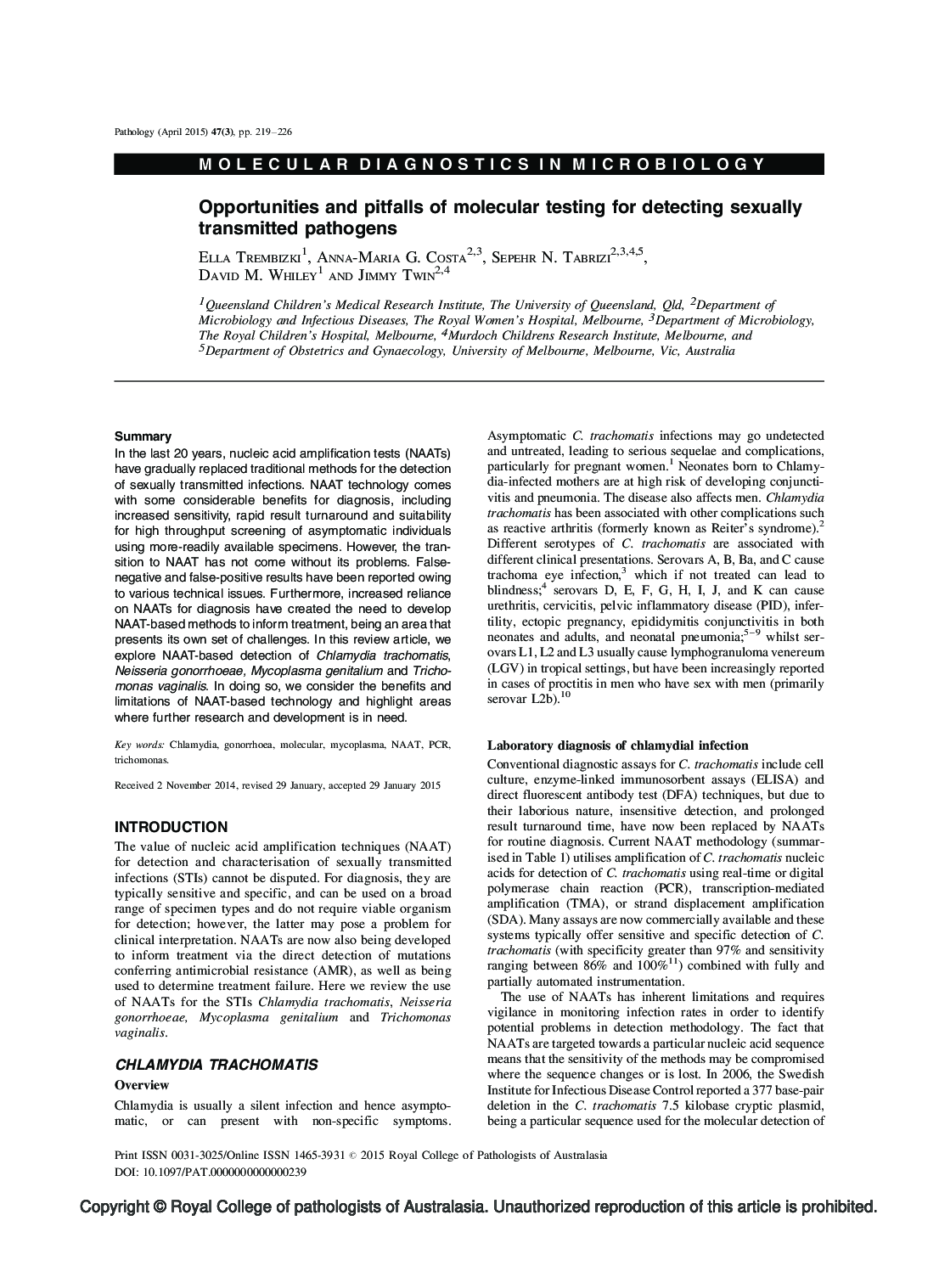| Article ID | Journal | Published Year | Pages | File Type |
|---|---|---|---|---|
| 10254967 | Pathology | 2015 | 8 Pages |
Abstract
In the last 20 years, nucleic acid amplification tests (NAATs) have gradually replaced traditional methods for the detection of sexually transmitted infections. NAAT technology comes with some considerable benefits for diagnosis, including increased sensitivity, rapid result turnaround and suitability for high throughput screening of asymptomatic individuals using more-readily available specimens. However, the transition to NAAT has not come without its problems. Falsenegative and false-positive results have been reported owing to various technical issues. Furthermore, increased reliance on NAATs for diagnosis have created the need to develop NAAT-based methods to inform treatment, being an area that presents its own set of challenges. In this review article, we explore NAAT-based detection of Chlamydia trachomatis, Neisseria gonorrhoeae, Mycoplasma genitalium and Trichomonas vaginalis. In doing so, we consider the benefits and limitations of NAAT-based technology and highlight areas where further research and development is in need.
Related Topics
Health Sciences
Medicine and Dentistry
Forensic Medicine
Authors
Ella Trembizki, Anna-Maria G. Costa, Sepehr N. Tabrizi, David M. Whiley, Jimmy Twin,
